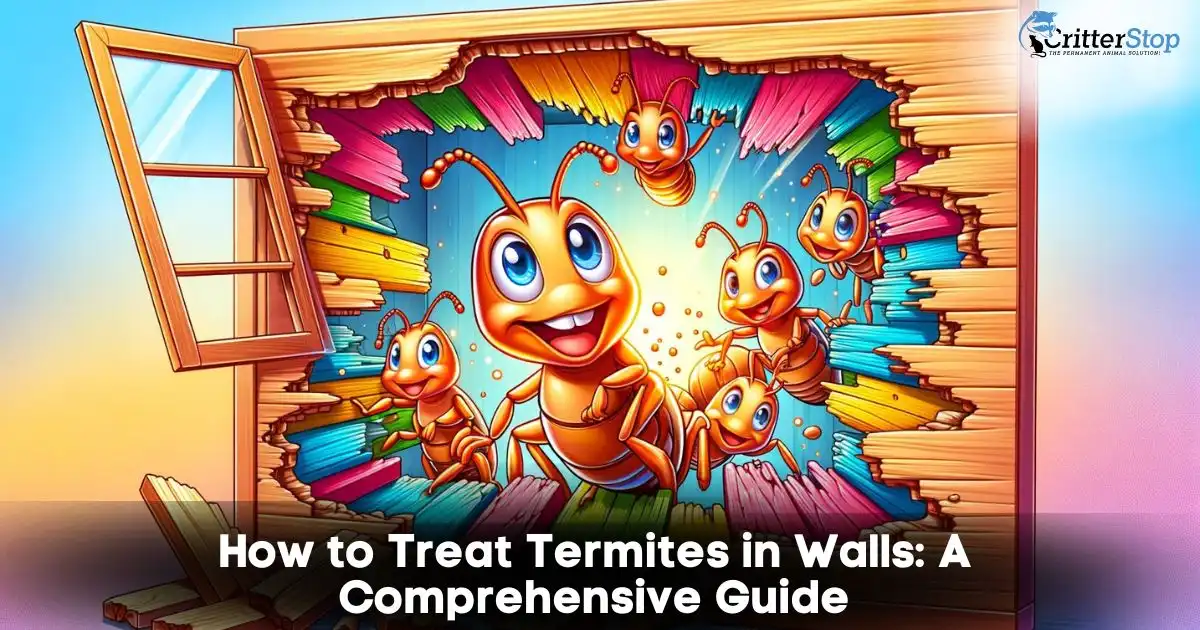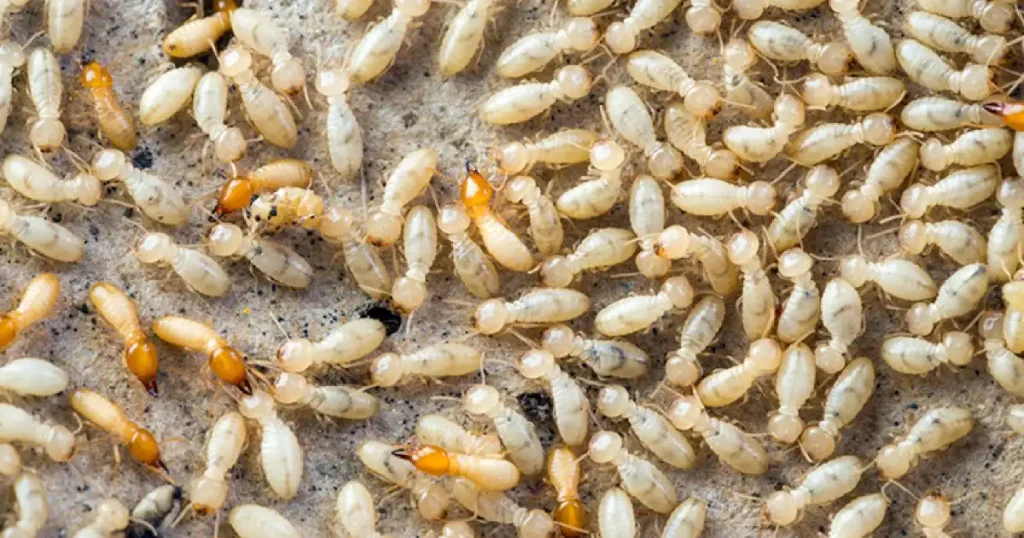
Termites pose a significant threat as they can cause extensive damage to residential properties. These minuscule bugs consume wood, and without proper intervention, they can inflict substantial harm to the integrity of a structure. Termites can be particularly problematic when they infest walls, as they can go undetected for long periods, causing extensive damage before they are discovered. Let's dive together on how to treat termites in walls.
Treating termites in walls requires a careful and thorough approach. The initial phase involves determining the magnitude of the pest problem. This can be done by inspecting the walls for signs of termite activity, such as mud tubes or termite droppings. After gauging the scope of the infestation, we can select the suitable remedy for eradication.
There are several treatment options available for termites in walls, which encompass chemical applications, baiting strategies, and physical obstructions. Each technique offers unique merits and drawbacks, and the optimal choice hinges on the particular conditions of the pest issue. Collaborating with a skilled pest management provider is crucial to guaranteeing the efficacy and safety of the intervention.

Termites, diminutive wood-consuming pests, possess the ability to inflict substantial harm on residences and structures. They've earned the moniker "silent devastators" due to their capacity to remain undetected for extended periods, quietly devouring the wood within your walls, floors, and ceilings.
Three primary varieties of termites have the potential to invade your dwelling: subterranean, drywood, and dampwood termites. Subterranean termites inhabit the soil, constructing mud tunnels to access their sustenance, whereas drywood termites reside within dry wood, devoid of any need for soil contact. Dampwood termites, as their name implies, exhibit a preference for moist wood, often inhabiting regions characterized by elevated humidity levels.
It's crucial to be adept at identifying indications of a termite invasion within your wall structures. Several typical indicators include:
If you harbor suspicions of a termite invasion, prompt action is imperative to forestall additional harm to your residence. Contact a professional pest control company that specializes in treating termites in walls. They will be able to assess the extent of the infestation and recommend the best course of action for treating the termites and repairing any damage they have caused.
It's also important to take preventative measures to reduce the risk of future termite infestations. This can include removing any wood debris from around your home, repairing leaky pipes or faucets, and ensuring that your home has proper ventilation to prevent excess moisture buildup.

Before treating termites in walls, it is important to conduct a thorough inspection of the affected area. Engaging the services of a skilled termite inspector is strongly advised. These professionals possess the necessary knowledge and equipment to identify termite presence and assess any resultant damage.
During the inspection, the inspector will look for visible signs of termites, such as mud tubes, termite droppings, and damaged wood. They will also use special tools such as moisture meters and infrared cameras to detect moisture and termite activity behind walls and other inaccessible areas.
Once the termite inspection is complete, the next step is to assess the extent of the damage. This will help determine the appropriate treatment method and the cost of repairs.
The inspector will identify the areas where termites have caused damage and determine the severity of the damage. They will also look for any structural damage or safety hazards caused by termite activity.
It is important to note that not all termite damage requires treatment. Occasionally, minor damage can be rectified without chemical intervention. Yet, in instances of substantial damage or the potential for structural compromise, treatment may become imperative.
In conclusion, a professional termite inspection and assessment is crucial in determining the appropriate treatment method for termites in walls. Homeowners should seek the help of a licensed termite inspector to ensure the safety and effectiveness of the treatment.

When it comes to treating termites in walls, there are several methods available. These methods can be broadly categorized into chemical treatments, non-chemical treatments, and bait systems.
Chemical treatments encompass the utilization of termiticides to exterminate termites. These termiticides can be administered to the soil surrounding the home's foundation or injected directly into wall structures. The termiticides can also be applied to wooden surfaces, which will repel termites.
One of the most common termiticides used for chemical treatments is fipronil. This chemical can be applied as a liquid or foam and is effective in killing termites.
Non-chemical treatments involve the use of physical barriers to prevent termites from entering the walls. These barriers can be made of metal or plastic and are installed around the foundation of the house. Non-chemical treatments can also involve the use of heat or cold to kill termites.
One non-chemical treatment that is becoming increasingly popular is the use of microwave technology. This involves the use of microwaves to heat the walls and kill termites.
Bait systems entail the deployment of bait stations strategically positioned along the house's perimeter. These stations house a lure that entices termites. Once the termites ingest the bait, they transport it back to their colony, culminating in the demise of the entire nest over time.
An inherent benefit of bait systems is their non-intrusive nature, devoid of chemical applications. Nonetheless, they may necessitate several months to yield results and might not be optimal for severe termite outbreaks.
Overall, the choice of termite treatment method will depend on the severity of the infestation, the type of building construction, and the homeowner's preferences. It is important to consult with a professional pest control company to determine the best course of action.

Preventing future termite infestations is crucial after treating termites in walls. Homeowners can take several preventive measures to ensure that termites do not return.
One of the most important things to do is to remove any wood debris or cellulose materials around the home. Termites are attracted to wood and cellulose, so removing these materials can make your home less attractive to termites.
Homeowners should also ensure that any wood in contact with the soil is treated or removed. Termites can easily enter the home through wood that is in contact with the soil.
Another preventive measure is to ensure that any cracks or gaps in the foundation or walls are sealed. Termites can enter the home through even the smallest of cracks, so sealing these gaps can prevent termites from entering.
Consistent upkeep and vigilant surveillance are paramount in thwarting potential termite invasions. Homeowners ought to schedule annual termite inspections conducted by a proficient pest management firm to safeguard against future infestations.
Homeowners should also keep an eye out for any signs of termite activity, such as mud tubes or discarded wings. If any signs of termite activity are found, homeowners should contact a pest control company immediately to prevent further damage.
Regular maintenance of the home's exterior, including keeping gutters clean and ensuring proper drainage away from the home, can also help prevent termite infestations.
By taking these preventive measures and regularly monitoring the home for termite activity, homeowners can help prevent future termite infestations and keep their homes termite-free.
Termites frequently elude detection until considerable damage has ensued. Nevertheless, there are discernible indicators to be vigilant for that could signal a termite intrusion within your wall structures. These include:
Should any of these indications manifest, it's imperative to promptly enlist the services of a reputable pest control company for a comprehensive inspection.
Treating termites in walls typically involves applying a pesticide directly to the affected area. This can be done by drilling holes in the wall or using a foam or liquid treatment. It is important to hire a professional pest control company to properly identify the type of termite and choose the appropriate treatment method.
While there are DIY methods for treating termites in walls, it is generally not recommended. Termite infestations can be complex and difficult to fully eliminate without the proper knowledge and equipment. Opting for the expertise of a professional pest control company is paramount to guaranteeing both efficacious treatment and prevention measures.
Some DIY methods for eliminating termites in walls include using boric acid, orange oil, or a vinegar and water solution. Nevertheless, these approaches might not yield the same level of effectiveness as professional treatments and could merely offer temporary respite. It is important to consult with a professional pest control company before attempting any DIY methods.
The most rapid method for exterminating termites is fumigation. This involves tenting the entire house and using a gas to kill the termites. Nonetheless, this approach can incur significant costs and might necessitate temporary displacement. It's crucial to seek guidance from a reputable pest control company to ascertain the most suitable treatment modality for your unique circumstances.
In most cases, it is possible to save a house that has been infested with termites. However, swift action is imperative, and enlisting the services of a proficient pest control company for both treatment and prevention is paramount. The magnitude of the destruction will dictate the requisite repairs, which could encompass replacing compromised wood and rectifying any structural impairments.
Termites, notorious for their ability to silently wreak havoc on homes and structures, can pose a significant threat to your property. However, when faced with the daunting challenge of termite infestations or the need for effective extermination services, the answer lies with Critter Stop.
If termites are causing damage, such as weakening wooden structures or compromising the integrity of your home, prompt action is crucial. At Critter Stop, we specialize in termite control and eradication, offering tailored solutions to protect your property from further harm. Contact us at (214) 234-2616 to schedule a consultation and receive a free estimate for our professional termite services.
Visit our Critter Library and learn more about our furry friends